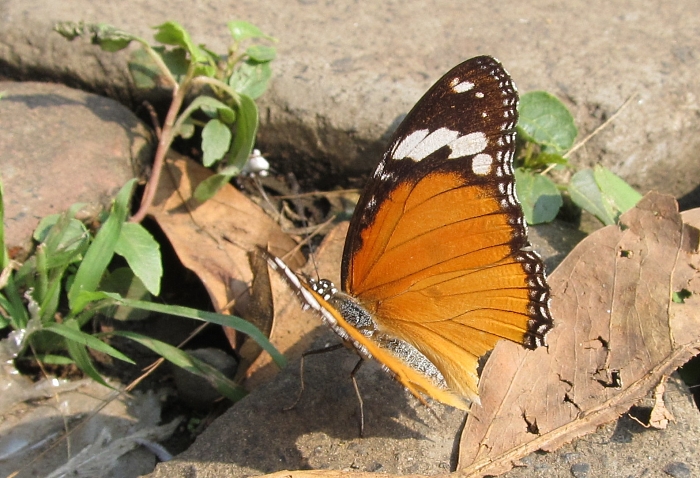
(unfortunately, I forgot to change the ISO for that picture, after using a high value for the comet earlier in the day)
This is the station at Aigle, buried beneath the stratus:

It hardly looks like a butterfly day! But 15 minutes away, at Martigny, the valley was clear. This is the road to the vineyards - so cold that my bicycle brakes were frozen solid before I reached the end of this track and I had to jump off to stop moving:

I reached yesterday's hotspot at 11h00 and immediately saw a male (I think - I'm not 100% sure) Queen of Spain fritillary. He was restless, because of a cold breeze that was rising, and though I got closer than yesterday he disappeared over the edge into the vineyard within seconds. Ten minutes later, 'he' returned and again stayed for a few seconds only. But when I looked at my photos, I saw they were of two different individuals (the second one is definitely a male):


This is the context - a sunny, but very exposed bank. They both tumbled off to the right, into the vines:

EDIT: I now think the first one is a female, so it's quite possible there's a very good reason why I never saw either of them again!
I tried elsewhere after about half an hour, as the wind was getting up, but found no more Queens. Even so, if I found two so quickly, I'm sure there were more on the wing, and possibly some females. This is quite a significant observation for 17th December!
At least two red admirals were parading in the same area:

View over Martigny:

And a final view from the tram back up to Villars:

Guy
































